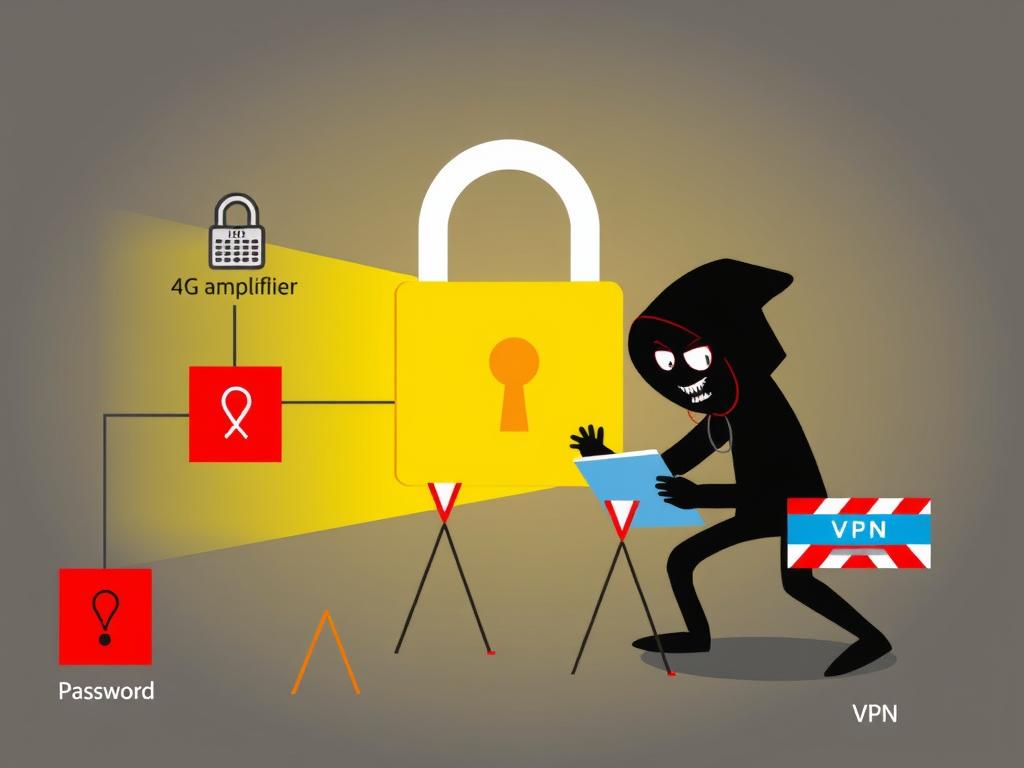
Upset by your slow 4G LTE signals at home or business? Are you the one to deplore dropped calls and buffering videos? A 4G signal amplifier could be the magic bullet by enabling your phone to stay connected even with a poor signal. Now, with connectivity technologies that connect to wireless networks, security is top priority. LTE signal boosters, which mainly aim at speeding up your internet connection, might as well be understood and addressed concerning potential security issues when the mobile network is considered. This article will clarify you on the procedures that a mobile security provider utilizes in order to optimize the device for your cellular network operators. Now, we are going to dig in to let you know how to secure your 4G signal booster. Avoiding unauthorized access and keeping your data safe are essential things to consider and must be protected the best possible way.
Why Security Matters for Your 4G Signal Booster
You might be wondering why a signal booster needs security. While the core function is to amplify existing signals, the potential for misuse exists. Consider these scenarios:
- Unauthorized Connections
An open and unsecured booster may allow persons with inappropriate access to connect to your boosted signal. This could lead to data theft undermining your privacy or even financial security. - Signal Interception on Wireless Networks
In the worst case, a cracked or unsecured booster is potentially used by others to intercept wireless signals, exposing all your data to eavesdropping or Man-in-the-Middle Attack. - Breach Prevention
A poorly protected booster could become a weak spot in your entire unit's cybersecurity; it would make it easier for the evil person to exfiltrate and gaze on sensitive information from your networks.
That is why it is good to work on improving RF Signal Security to safeguard your wireless network safety from surfacing with each passing moment.
Understanding the Security Risks
Before diving into solutions, it’s important to understand the landscape of potential threats when dealing with RF signal security:
- Eavesdropping
Unauthorized parties could attempt to intercept and listen in on your data transmissions. - Signal Spoofing
Malicious actors may attempt to trick devices into connecting to a rogue network using a spoofed signal. - Malware Protection
A compromised device connected to your boosted signal could introduce malware protection, virus protection, or even trojan protection into your local network. - Unauthorized Connections
The act of giving someone an unauthorized connection is wrong in itself, since it may expose you to legal liability
Securing Your 4G Signal Booster: Practical Steps
Fortunately, protecting your 4G signal booster doesn’t require advanced technical skills. Here are practical steps you can take to enhance your wireless security and data protection:
- Password Protection
Consult your booster’s manual (or the manufacturer’s website) for initial setup instructions. Crucially, change any default passwords immediately. Use strong, unique passwords that are difficult to guess. - Authentication and Authorization
Many boosters offer user authentication features. Enable these to control who can access and manage the booster’s settings. Authorization mechanisms determine what actions authenticated users are allowed to perform. - Access Control
Implement access control lists or rules to restrict access to the booster’s management interface. Only authorized personnel should have access to configuration settings. - Encryption
While not all boosters offer advanced encryption, check if your model supports Data Encryption Standards (DES, AES). Even basic encryption adds a layer of protection against casual eavesdropping. - Firewall
If your booster connects to your home or office network, ensure your router’s firewall is properly configured. This acts as a barrier against unauthorized access from external networks. - Network Monitoring
Regularly monitor your network for any unusual activity. Look for unexpected connections or data usage spikes. - Physical Security
Don’t overlook the importance of physical security. Place your booster and its components (especially the external antenna security and coaxial cable security) in a secure location, protected from tampering or theft. - Firmware Security
Keep your booster’s firmware up-to-date. Manufacturers often release updates that address security vulnerabilities. Check for Over-the-Air (OTA) updates security for your particular model. - VPN (Virtual Private Network)
For enhanced security, especially when accessing sensitive data, consider using a VPN on your devices that connect through the boosted signal. A VPN creates a secure communication channel. - Security Policies
Set Security policies in order to ensure security for your employees. - Security Awareness Training
Make sure everyone with access to your network understands basic security principles.
Compliance and Regulations
While there is no need for the average user to delve too deeply into compliance regulations like HIPAA or GDPR, however, being cognizant of any relevant data protection legislation in their use of signal boosters is, of course, critical for businesses. It is really necessary to be aware of your obligations.
Seeking Professional Help
Consulting a network security professional might help secure your 4G signal booster in case you don't know how to do so. They can carry out security audits and penetration testing to find any vulnerabilities and suggest security measures accordingly.
Staying Ahead of Threats
Cybersecurity threats are constantly evolving. Emerging infections and vulnerability management practices must be watched. Install Intrusion Detection Systems and Intrusion Prevention Systems. The security best practices should be periodically reviewed and security implementations modified to adapt to the threat environment.
By taking into consideration these measures, you can reap the rewards of increased 4G LTE signal strength while minimizing chances for unauthorized access and safeguarding your data. Always remember to be on guard and take measures to secure the wireless environment.






















